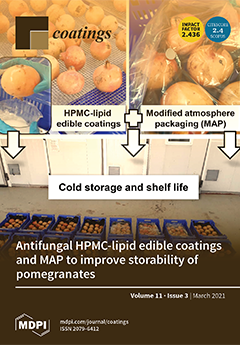Polymer-based wood coatings are used for aesthetic purposes as well as to protect wood surfaces, especially under external conditions. High-hardness mineral fillers are thought to enhance the resistance of these polymer coatings to wear and scratching. However, recent studies suggest that the relatively
[...] Read more.
Polymer-based wood coatings are used for aesthetic purposes as well as to protect wood surfaces, especially under external conditions. High-hardness mineral fillers are thought to enhance the resistance of these polymer coatings to wear and scratching. However, recent studies suggest that the relatively low-hardness mineral calcite (CaCO
3, Mohs hardness of 3) performs similarly to harder minerals under external conditions. It can replace more expensive hard minerals, thus driving research interest in its use. In this study, CaCO
3 powders with different grain sizes were applied to rapid alkyd-based coating formulations, and the effect of CaCO
3 particle size on the scratch behavior of the coatings was investigated under identical test conditions. The scratch morphologies, scratch hardness, and roughness values of the scratched surfaces indicated that the surfaces of the rapid alkyd-based wood coatings including finer-grained CaCO
3 experienced plastic plowing-type deformation in the form of regular, narrow, and shallow scratches, showing high scratch resistance. Coatings using coarser-grained CaCO
3 experienced more extensive plastic deformation of the plowing–tearing type owing to the weaker filler–polymer interface and the breakage of larger coating pieces from the coating surface.
Full article





